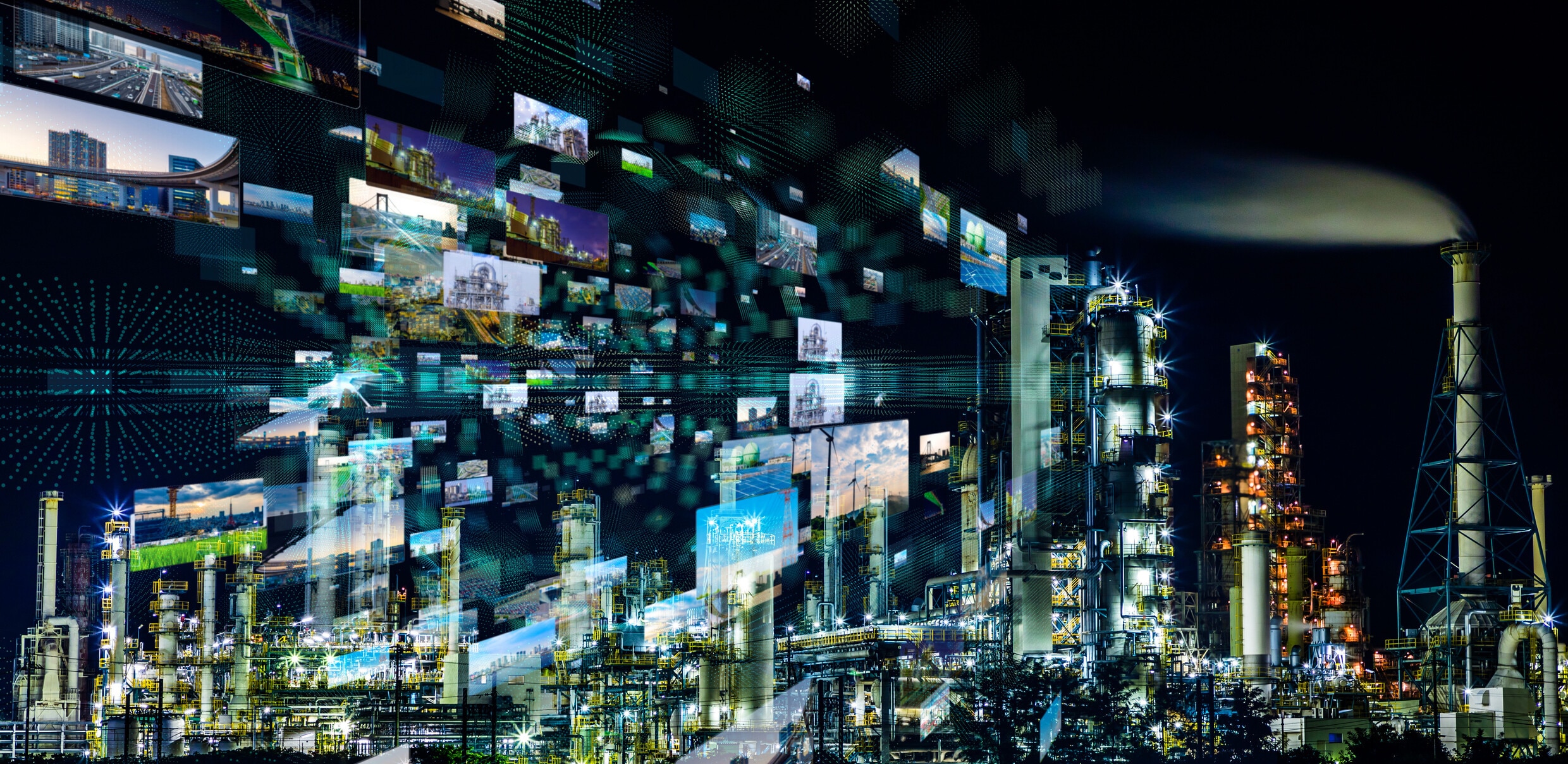Humans aren’t made for repetition – it’s time AI took over manufacturing

AI can drive productivity and empower workforces to work smarter in three ways.
Image: REUTERS/Danish Siddiqui
Stay up to date:
Innovation
For the past 30 years, gross domestic product (GDP) across the globe has been shrinking. Where capital investment and increases in labour have been traditional drivers of production, we are now at a crossroad where we are no longer able to sustain the level of investment to drive the levels of growth the world desires. This situation is mirrored in the industrial sector, whereby the average age of America’s factories exceeds 20 years, but for the most part their operations and production levels have not significantly improved since they were introduced.
However, Accenture believes the outlook should not be all doom and gloom, and that investment in AI has the potential to double the annual economic growth rates of major developed economies, such as Germany, and triple Japan’s economic rate by 2035. In the manufacturing industry, Accenture believes the power of AI technologies will increase profitability by 39%, boosting Gross Value Added (GVA) by almost $4 trillion in 2035.

Manufacturing’s high reliance on machinery and its legacy-driven operations environment, whereby teams rely on operator experience to guide their decision-making, makes it a prime candidate to derive high return on investments when the sector invests in AI.
AI can drive productivity and empower workforces to work smarter in three ways:
1. Intelligent automation
2. Workforce and asset enhancement
3. Accelerate innovation
AI and its self-learning capabilities can be especially valuable for industries like automotive manufacturing, which have as many as 300 processes involving human operators and robots working together to create a product for their clients.
Without AI, a human operator will set the different parameters for the process and output based on their experience, but any errors are only found later. The cost of these errors can result in a higher rate of scrap being produced, leading to the manufacturer not fulfilling a customer’s order in time, while also increasing their own production costs.
In an AI-powered environment, the parameters will be controlled by AI; any time the parameters fall outside of the specifications, the AI-powered systems will not just notify but eventually control them before it impacts the quality of the product. This is only possible due to AI-powered analytics systems’ ability to dive deeper into the data that would otherwise take weeks or months to manually analyze the millions of data points that are generated on today’s operations floors. By being able to monitor the quality of production throughout the process, AI-powered environments are producing better quality output, less scrap and their operating costs are reduced. AI brings intelligence into automation – enabling industrial companies to not only be more efficient, but allowing operators the time to derive further value out of their processes and make data-driven strategic decisions.
Instead of relying on the assumption that sweating a machine will increase production, AI enables industrial companies to optimize how they utilize their machines and assets so that they do not run longer than necessary, therefore reducing asset downtime and costly repairs. AI provides new opportunities for operators to develop predictive maintenance programs, asset optimization and cost-reductions strategies, as well as contributing to their business’s environmental sustainability commitments.
It is estimated that the industrial sector is the third largest source of man-made carbon dioxide emissions, producing 20% of fossil fuel-related carbon dioxide emissions in 2010. Industrial companies are under the spotlight to reduce their carbon footprint and with AI they can accelerate how they meet their targets. For example, many agricultural plants use cogeneration turbines to produce energy and steam as part of their production process. AI can help operators to forecast in real time the optimal power and steam generation, while minimizing gas usage. As a result, chief engineers can optimize turbine runtime, improve fuel efficiency, lower their carbon footprint and reduce their energy costs.
Industrial processes are complex by their very nature and are difficult for the “naked eye” to easily identify opportunities for improvement. AI enables industrial operators and engineers to dive deeper into the operations floor and identify opportunities to not only optimize individual machines but automate the entire manufacturing line. With AI, industrial companies can empower their operators, their most valuable asset, to challenge their current assumptions of their operations, drive innovation, increase their global competitiveness and improve profitability.
Don't miss any update on this topic
Create a free account and access your personalized content collection with our latest publications and analyses.
License and Republishing
World Economic Forum articles may be republished in accordance with the Creative Commons Attribution-NonCommercial-NoDerivatives 4.0 International Public License, and in accordance with our Terms of Use.
The views expressed in this article are those of the author alone and not the World Economic Forum.
Related topics:
Forum Stories newsletter
Bringing you weekly curated insights and analysis on the global issues that matter.
More on Manufacturing and Value ChainsSee all
Chiara Barbeschi and Filipe Beato
July 24, 2025
Elena Raevskikh and Giovanna Di Mauro
July 23, 2025
Manikanta Naik and Murali Subramanian
July 23, 2025
Neeka Mashouf and Leila Mashouf
July 15, 2025
Markus Kirchschlager and Benedikt Gieger
July 10, 2025
Benedikt Gieger and Alfredo Ramos Plasencia
July 7, 2025





